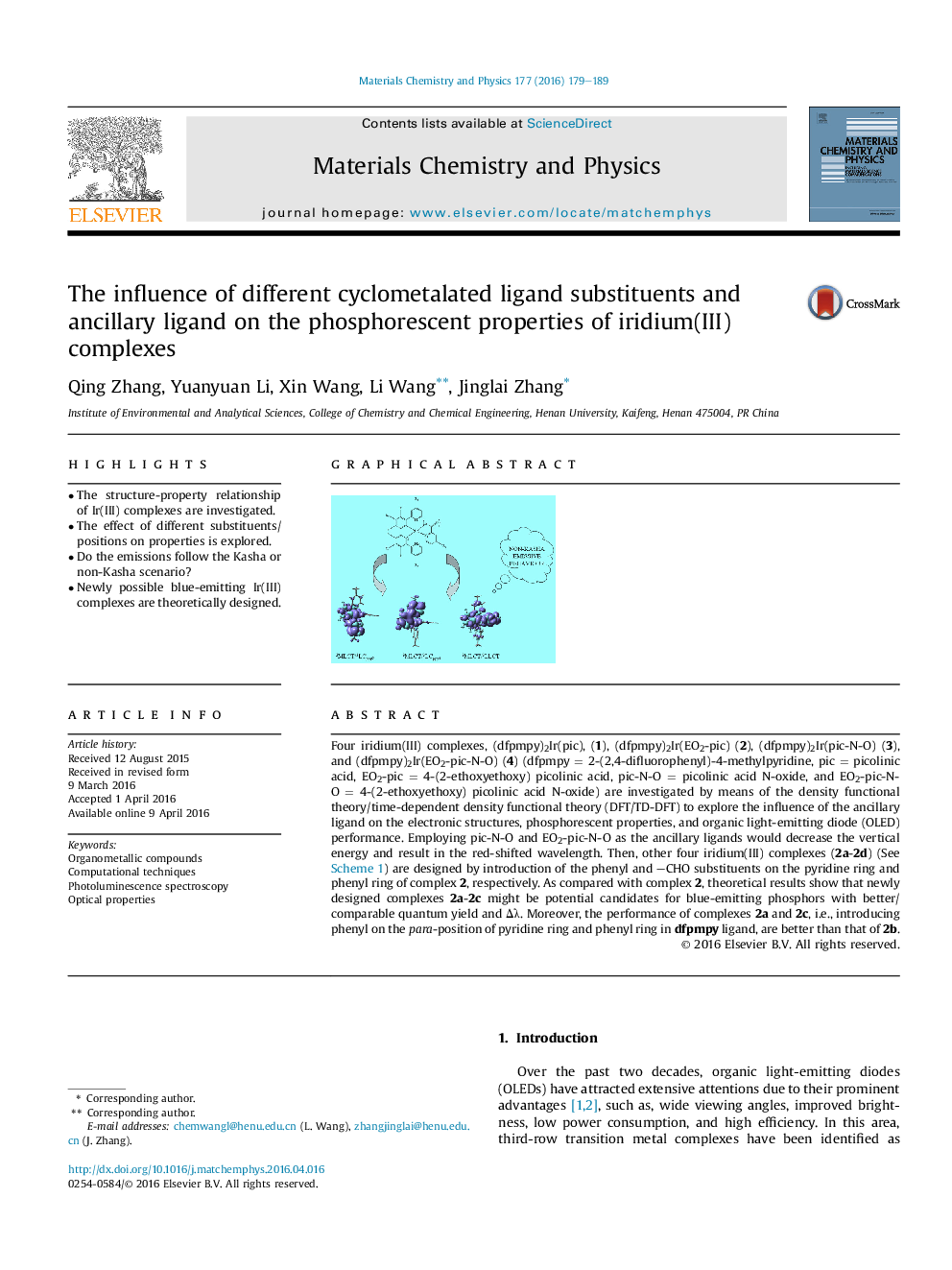| Article ID | Journal | Published Year | Pages | File Type |
|---|---|---|---|---|
| 1520609 | Materials Chemistry and Physics | 2016 | 11 Pages |
•The structure-property relationship of Ir(III) complexes are investigated.•The effect of different substituents/positions on properties is explored.•Do the emissions follow the Kasha or non-Kasha scenario?•Newly possible blue-emitting Ir(III) complexes are theoretically designed.
Four iridium(III) complexes, (dfpmpy)2Ir(pic), (1), (dfpmpy)2Ir(EO2-pic) (2), (dfpmpy)2Ir(pic-N-O) (3), and (dfpmpy)2Ir(EO2-pic-N-O) (4) (dfpmpy = 2-(2,4-difluorophenyl)-4-methylpyridine, pic = picolinic acid, EO2-pic = 4-(2-ethoxyethoxy) picolinic acid, pic-N-O = picolinic acid N-oxide, and EO2-pic-N-O = 4-(2-ethoxyethoxy) picolinic acid N-oxide) are investigated by means of the density functional theory/time-dependent density functional theory (DFT/TD-DFT) to explore the influence of the ancillary ligand on the electronic structures, phosphorescent properties, and organic light-emitting diode (OLED) performance. Employing pic-N-O and EO2-pic-N-O as the ancillary ligands would decrease the vertical energy and result in the red-shifted wavelength. Then, other four iridium(III) complexes (2a-2d) (See Scheme 1) are designed by introduction of the phenyl and CHO substituents on the pyridine ring and phenyl ring of complex 2, respectively. As compared with complex 2, theoretical results show that newly designed complexes 2a-2c might be potential candidates for blue-emitting phosphors with better/comparable quantum yield and Δλ. Moreover, the performance of complexes 2a and 2c, i.e., introducing phenyl on the para-position of pyridine ring and phenyl ring in dfpmpy ligand, are better than that of 2b.
Graphical abstractFigure optionsDownload full-size imageDownload as PowerPoint slide
